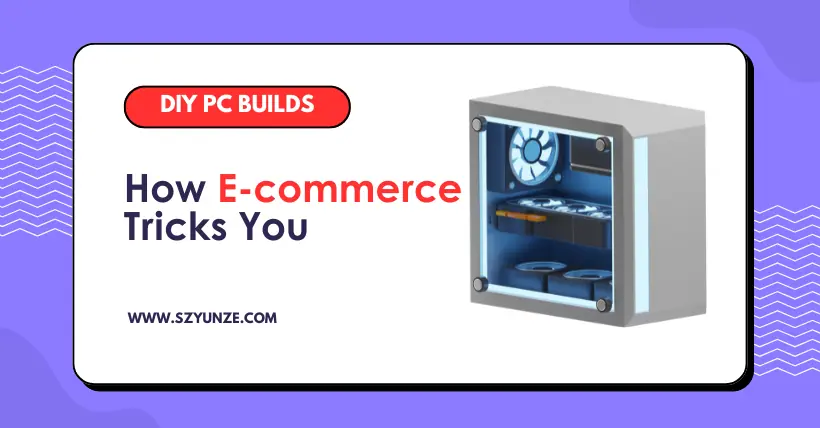More and more players are starting to buy DIY pre-built computers online. Not only does this eliminate the hassle of assembly, but it also seems very cost-effective, with some hardware being cheaper than buying it individually. However, as the saying goes, “There’s no such thing as a free lunch,” and merchants are certainly out to make a profit. So, what are the hidden traps behind these seemingly cheap online pre-built computers?
1. Fancy configurations of prebuilt PCs, but no specific model numbers
Many DIY pre-built computers look very impressive on the spec sheet, boasting eight-core, sixteen-thread CPUs, i9 performance, smooth gaming experiences, and other flashy terms, misleading people into thinking they offer strong performance. However, when it comes to the specific parameters of the hardware, merchants often remain vague.
The most common trick is not specifying the CPU model, simply labeling it as i7 level or 8 cores and 16 threads. These are usually old server platforms, what we call “foreign trash,” which seem high-performance but have low clock speeds, performing poorly in games and large applications.
Additionally, they don’t specify the exact brands and models of crucial components like the power supply, memory, and hard drive, only broadly labeling them as “top brands” or “well-known brands.” This practice involves using cheap no-name or counterfeit products to masquerade as high-priced brand-name products, thereby earning substantial profits.
2. High-end hardware, but refurbished second-hand
Some merchants reduce costs by using second-hand or refurbished hardware to assemble pre-built computers, while the spec sheet calculates prices as if they were new, creating a significant price gap. Although these parts are cheap, their performance is unstable, and they lack official warranties, relying only on store after-sales service.
In the past three years, the biggest victims of second-hand hardware have been graphics cards, especially the 10-series and 30-series GPUs, which are very common in pre-built configurations. These cards have often been “well-worn” from long-term use. It’s not an exaggeration to say that more than half of the pre-built computers online use second-hand mining cards. The reliability of these cards depends on luck; a good one might last five years, while a bad one might suffer from screen artifacts, instability, and excessive noise.
Storage products are also affected by refurbishing. After the collapse of Chia coin mining, a large number of hard drives and SSDs flooded the market, and online pre-built computers became a prime destination for these mining drives. Second-hand drives carry risks like bad sectors and data loss, which is particularly harmful when it involves user data.
3. Seemingly mainstream, but bulk OEM stock
Even mainstream hardware can have pitfalls. Many merchants replace boxed items with bulk OEM versions while listing the boxed prices on the spec sheet, resulting in a 100-300 yuan price difference.
Additionally, some CPU and motherboard pairings are irrational. A common example is pairing a locked i5-13600 CPU with a Z790 motherboard that supports overclocking. The overall configuration looks high-end, but there’s no need for the Z790, and its higher price is just used to inflate the overall cost.
Another common practice is using bulk OEM motherboards or graphics cards, which may have reduced power supply and cooling capabilities, with fewer ports on the motherboard. Early bulk OEM products were easily identifiable online, but later they started using custom color boxes and were listed online, yet their OEM nature remained unchanged.
As the saying goes, “the buyer is never as shrewd as the seller,” and online pre-built computers are no exception. Merchants aim for profit, so expecting very cheap prices is unrealistic. It’s worth reiterating that we’re not saying second-hand or OEM products shouldn’t be bought, but rather that selling them at high prices is deceptive to consumers. So, when placing an order, be cautious and don’t blindly believe the merchants’ hype, to avoid becoming a target for their clearance inventory.

Disclaimer: This article is created by the original author. The content of the article represents their personal opinions. Our reposting is only for sharing and discussion purposes and does not imply our endorsement or agreement. If you have any objections, please get in touch with us through the provided channels.



